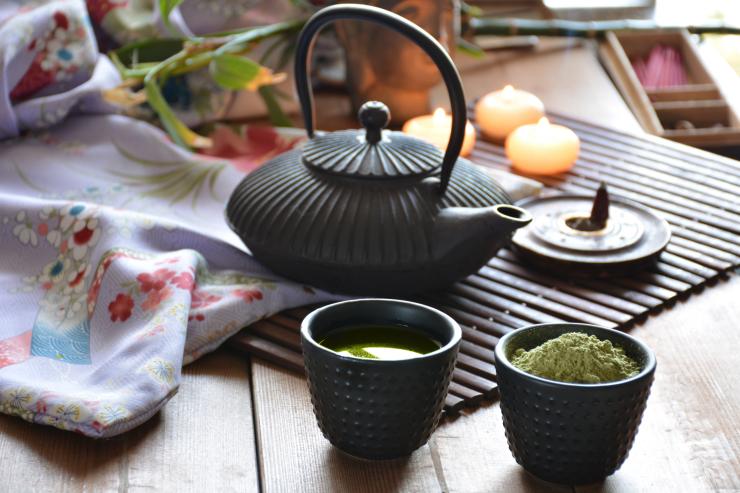Matcha is a ground green tea used in Japanese ceremonies, which dates back to ancient times in China and Japan, where the custom of gathering in harmony around the green liquid took hold.
Its preparation requires keeping the tea leaves in the shade, to slow down their growth and obtain a greater quantity of amino acids; then the leaves are dried, purified and ground until they reach a fine consistency. This tea, one of the best-kept secrets of Zen monks, is rich in antioxidants, which is why it is believed to prevent ageing, reduce inflammation and promote weight loss. Rich in L-theanine, an amino acid that relaxes and energizes without depleting, it is a true natural jewel.
Matcha green tea is rapidly gaining popularity around the world due to its ability to help reduce stress, boost defences, lower cholesterol and fight cancer. One of the longest-living places in the world is Okinawa, Japan, which doctors attribute in part to regular consumption of matcha tea. Basically, this variant consists of the entire green tea leaf which, after a special cultivation, harvesting and drying process, is ground into a fine, deep green powder that multiplies the benefits of green tea.
One glass of matcha is equivalent to 10 glasses of green tea in terms of antioxidant content and nutritional value. When brewing a cup of green tea, you can extract only a fraction of its benefits, as most of the nutrients remain in the tealeaves after brewing.
The only way to harness the full potential of vitamins, minerals, antioxidants and amino acids is to consume the whole leaf. Although matcha tea originated in China during the Song Dynasty, it was the Zen monks of Japan who popularized this tradition. During long hours of meditation, they drank matcha to stay alert and calm, promoting concentration and mental clarity without the nervous energy of coffee.
The ceremonial use that originally characterized this ingredient has, through the palate, overcome the barriers of time, geography and the possibility of knowing different preparations from other countries. It is a preparation that comes from afar, because in the year 1191, the Buddhist monk Eisai brought Matcha tea to Japan, with the introduction of Buddhism (Zen).
Over time, Matcha tea disappeared in China but took hold in Japan thanks to the customs of Buddhist monasteries. It was later adopted by the upper classes of Japanese society between the 14th and 16th centuries. The Matcha producing regions are Uji in Kyoto (tea from this region is called “Ujicha”) and Nishio in Aichi (“Nishiocha”). (Photo: 123rf)






